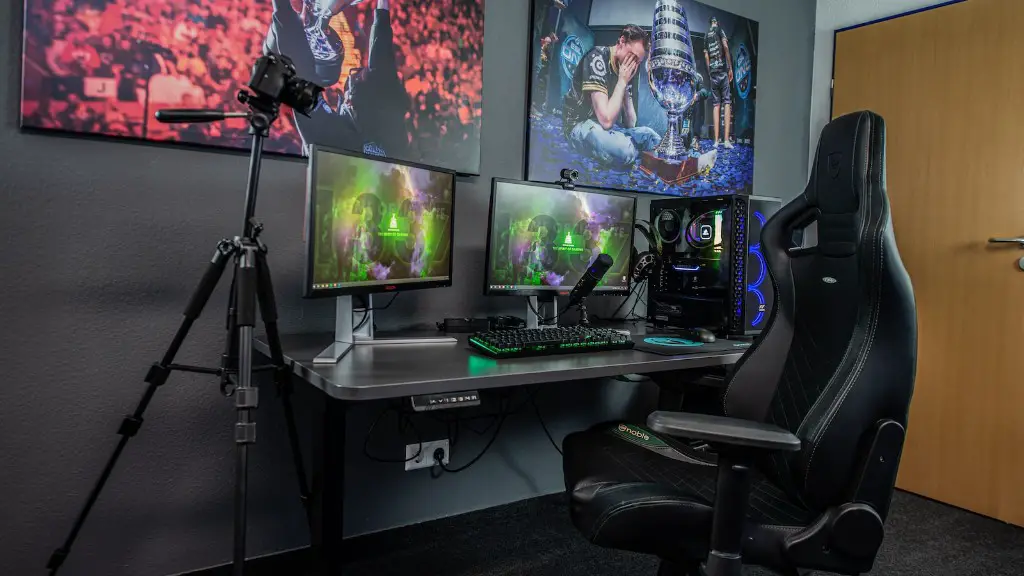Virtual Reality (VR) gaming is becoming increasingly immersive, necessitating more powerful computing hardware for a mesmerizing experience. Building a VR ready gaming PC requires careful planning and forethought. Here are essential steps to constructing your own VR ready gaming PC.
First, you must determine your budget. This will help you narrow down which components are within your price range. Secondly, evaluate your needs. Will you just be playing light VR titles, or will you be pushing your PC to the limits? This evaluation is essential to purchasing the appropriate components. Thirdly, research components and part compatibility. Knowing what components and parts are compatible with one another will help you to build an optimized system. Fourthly, obtain your components and parts. You’ll need to acquire a case, motherboard, RAM, a processor, a power supply and a GPU. Fifthly, assemble the components. Follow guidelines carefully and make sure to ground yourself before handling any of the parts. Make sure all components are installed properly and securely. Sixthly, insert your operating system on either a disc or USB drive. Finally, test your machine. You can use benchmarking software to make sure all parts are working correctly and then download your preferred VR game.
Complete System Setup
After constructing the PC, you must set up the entire system, once again following each step carefully to ensure everything is running optimally. First, install the latest GPU drivers. This will make sure the video card is utilizing the most recent technological advancements from the manufacturer. Next, make sure to update the operating system, as this will guarantee you receive all the most recent features and updates. Thirdly, customize the operating system for optimal performance. Fourthly, reconfigure the BIOS settings, if needed. Installing game profiles may also be beneficial. Fifthly, tweak your graphics settings. Doing this may require a little trial and error in order to achieve optimal performance. Finally, check your hardware to ensure all parts are still working properly.
VR Ready Gaming
Once your PC is set up and running, you can begin VR gaming. Firstly, install your preferred VR titles. Secondly, calibrate your VR headset. Thirdly, make sure to customize the performance settings so it’s running as smoothly as possible. Fourthly, adjust the in-game settings to achieve optimal results. Fifthly, use extras such as motion controllers for a more immersive experience. Finally, enjoy your gaming session.
PC Maintenance After Gaming
Once you’ve finished gaming, it’s important to take steps to maintain your PC. Firstly, close all applications, particularly those using lots of power, such as VR titles. Secondly, keep your gaming PC clean, as this will help with cooling and air flow. Thirdly, check for available updates for each component, as this will help with performance and ensure compatibility. Fourthly, scan for malware and viruses, which may slow down your PC or hardware components. Fifthly, consider overclocking your CPU or GPU, as this will help to achieve improved results in games. Finally, back up your hard drive regularly so you won’t lose any important files.
Testing VR Performance
Despite following all the steps necessary, it’s still important to run test games to ensure your machine is running efficiently. Firstly, use benchmarking software to measure performance. Secondly, stress-test the machine with a particularly demanding game. Thirdly, configure graphical settings to identify optimal performance. Fourthly, check the frame rate, which should be consistently high. Fifthly, make sure the visuals are crisp and the audio is clear in order to get the best experience. Finally, use motion controllers for an even more engaging game.
Hardware Upgrades for VR
As technology improves, your PC may need a few upgrades and software updates. Firstly, upgrade your GPU if you need more power for games. Secondly, configure overclocking, as this will help with performance. Thirdly, invest in a more powerful processor. Fourthly, consider more RAM to improve multitasking capabilities. Fifthly, update your operating system, as this may offer more benefits. Finally, replace a few key components such as the motherboard or power supply if necessary.
